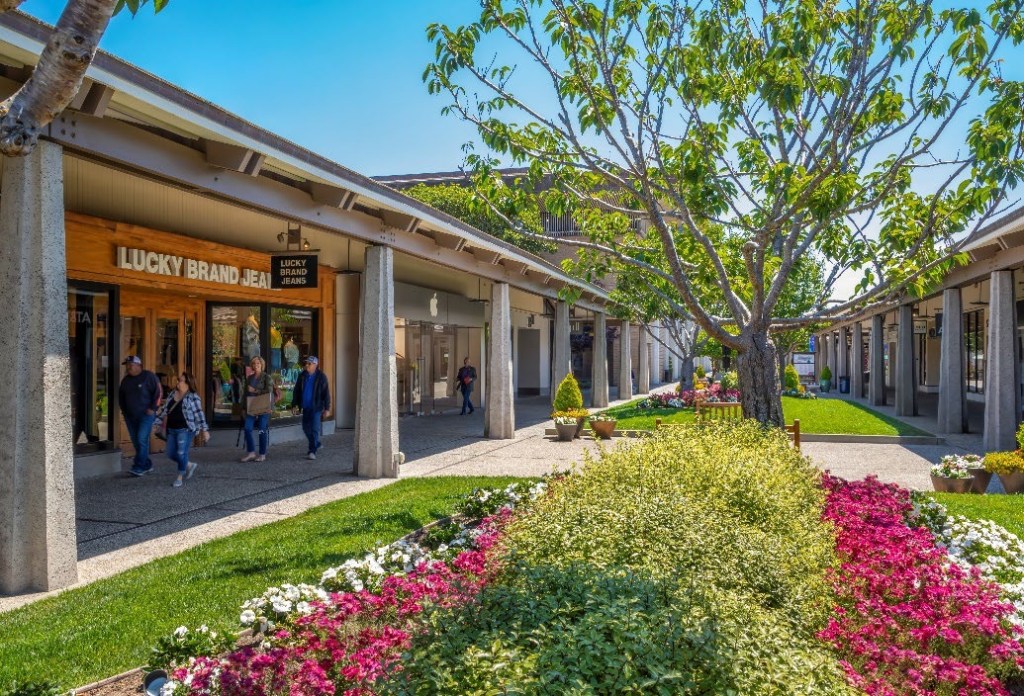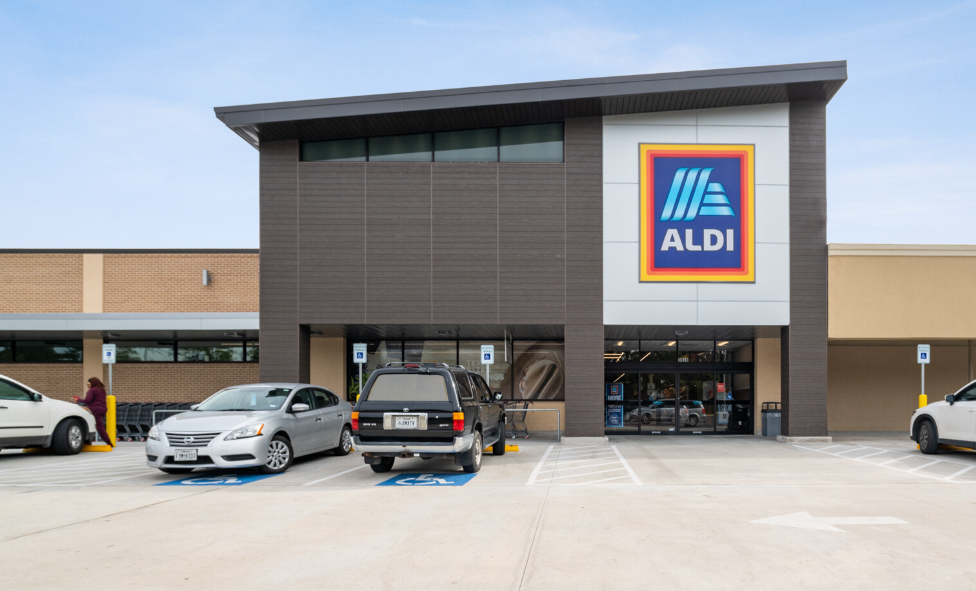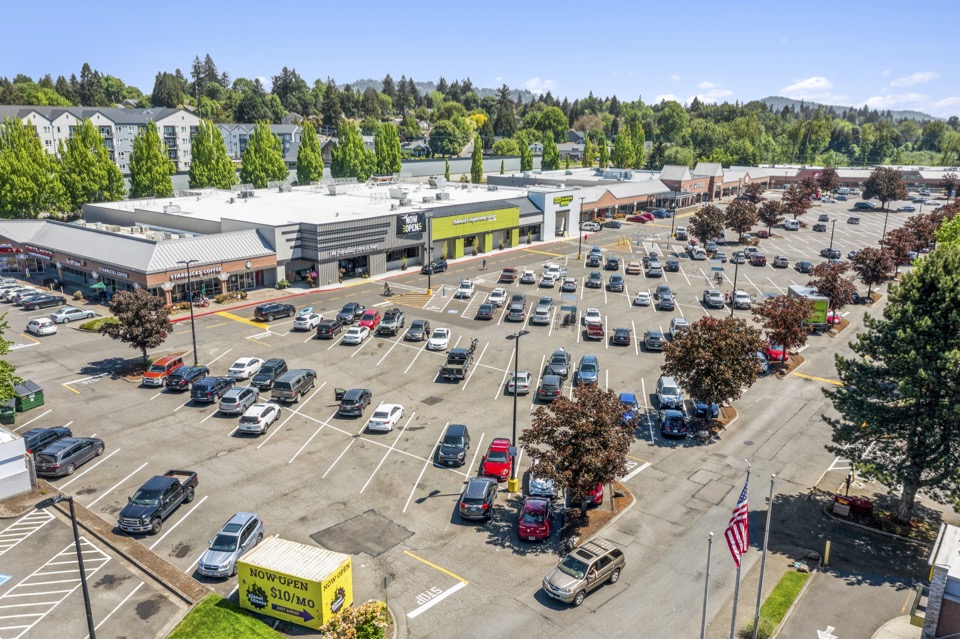Why Investors Are Hungry for Grocery-Anchored Retail


Forget upscale malls. Today, retail’s crown jewels are grocery-anchored shopping centers. Transaction activity for these multi-tenant properties ballooned to $7 billion in 2024, with deal volume leaping 34 percent in the second half of the year vs. the first six months, according to JLL. Asset values were through the roof as the average price per square foot hit a record high of $209.
What’s behind this strong appetite? It’s a perfect storm of increases in nearly every metric—from foot traffic to rent growth—and an inventory that far exceeds demand.
Cushman & Wakefield reported that only 8.3 million square feet of retail space were delivered last year. Currently, there are approximately 10.6 million square feet under development nationwide. For reference, Phoenix’s industrial pipeline is more than twice that amount.
“Tenants are expanding into a market that itself isn’t expanding,” said Jim Dillavou, Lincoln Property Co.’s national head of retail investments and retail capital markets.
Combine this with other retail property and tenant types struggling to stay afloat, and the result is a highly-competitive “supply-demand imbalance that was exacerbated by COVID-19,” according to Jan Sweetnam, CIO & executive vice president with Federal Realty Investment, which has recorded 16 consecutive quarters of positive net absorption, with portfolios that range between 84 and 96 percent leased.
“Because all the weak retailers died and went bankrupt, if you have a strong center that dominates the marketplace, it’s going to be in a really great position,” he noted.
It’s no wonder, then, that a more diverse array of investors has entered the retail category. REIT ownership of grocery-anchored shopping centers is growing faster than private ownership, but private investors were 68 percent of the investor base in 2024, JLL data shows.
There’s nothing more dependable for driving traffic than grocery stores, and for those reasons you get the best cap rates and the most interest from investors and tenants.
—Drew Gorman, Principal, MCB Real Estate

Top-shelf retail
On average, a grocery store lease lasts 20 years, at a time when the vacancy rate sits at 3.5 percent, according to JLL. Add to this a brand such as Publix, H-E-B or Stop & Shop, and some of the best cap rates in the sector will quickly emerge.
“It’s one of the safer areas of the new retail landscape due to long-term leases with strong credit tenants such as Kroger, Albertsons and Whole Foods,” observed Robert Levy, a founder & managing partner at LBX Investments, a private investor that owns properties in Georgia, Illinois, South Carolina, Florida and Virginia.
These longer leases, coupled with the items that grocery stores sell, lead investors to label grocery-anchored spaces as “necessity-based” retail with the grocery store driving foot traffic at most neighboring stores, which could be anything from pharmacies to nail salons.
“You get the repeat visit of the customer, and also the value of the shop space that’s adjacent to it,” noted Christine Mastandrea, president & COO at Whitestone REIT. “That (adjacent) space is becoming almost as valuable as the grocer is.”
Acquisition shopping lists
During the pandemic, mall owners learned the hard way that location alone won’t drive the foot traffic. Consumer spend and rent growth are necessary to generate sustained ROI.
Therefore, grocery-anchored investors are being as strategic as possible about their purchases. Before pulling the trigger on a new buy, successful investors will study the regional and local markets as well as demographic trends and consumer habits.
At the regional level, the Sun Belt makes the most sense for investors today because it accounts for eight of the 10 fastest-growing counties by numeric growth, according to the U.S. Census Bureau.
Because all the weak retailers died and went bankrupt, if you have a strong center that dominates the marketplace, it’s going to be in a really great position.
—Jan Sweetnam, CIO & Executive Vice President, Federal Realty Investment Trust
Investors will look for the best communities and the best sites in those communities. “Much of that might have to do with being on the best corner, in the most convenient location or (nearby) a high density of homes and possibly even high-income homes,” added Mastandrea.
More residents mean more people interacting with the surrounding restaurants, department stores and entertainment centers, according to Robert Taylor, CIO & president at Brixton Capital, which recently closed on a $250 million joint venture deal geared toward retail acquisitions.

Investors also look at the type of grocer. The ideal tenant is not always a name brand, and equally important is the tenant’s distinct appeal to the consumers living in the area.
The tenant’s market share, sales relative to the size of the space they occupy and their competitive advantages all weigh heavily on what constitutes a worthwhile acquisition, according to Mastandrea.
As such, buying a highway-adjacent shopping center anchored by Publix in a suburb in South Florida may generally be a safer bet than a Winn-Dixie or Aldi, but there are equally compelling reasons to buy one of the other two. While Publix may be the largest grocer in the Sunshine State, Aldi’s discounted items could be appealing to more budget-conscious individuals.
“If you invest in the space, it’s important to know how that grocer is performing,” he noted.
For example, said Mastandrea, throughout the state of Texas, H-E-B has far and away the most stores, and so any acquisition that isn’t anchored by one needs to have some other selling factor to drive rent growth.
Investors can find niches, be it in appealing to specific demographic groups or consumer habits. Mastandrea is noticing a bias toward organic options, alongside more niche, “secondary-trip” grocers. “It’s not unusual that you go to one or two more grocers a week, depending on what your needs are,” he pointed out. The grocers that are family-owned and private continue to compete just as well if not better against the big guys who are publicly owned and traded.”
Additionally, it always helps to have a diverse array of adjacent shops and services alongside the grocery store. “They are places where you shop on a daily basis, and that can be the outparcels, inline shops, the grocer itself or a Starbucks in the grocery store,” observed Sweetnam.
Think of the grocery store as an entrée, while surrounding shops are the sides that make one menu item more appealing than the others. A shopper is very likely to go to a Safeway over Albertsons if they can get their nails done or a prescription filled next door.
Lenders on a Shopping Spree
As investors fill their carts with retail acquisition, development and value-add opportunities in the grocery-anchored retail sector, they are finding an enthusiastic group of lenders and equity partners willing to help make their deals happen.
Lenders are drawn to the reliable ROI these properties often provide and the potential to offset losses from ailing office investments.
“Because there’s less interest in office, the debt capital needs to be allocated elsewhere, and a lot of it is being focused on retail,” observed Jim Dillavou, national head of retail investments and retail capital markets at Lincoln Property Co.
As a result, banks, CMBS lenders and life companies are all eager to take a piece out of the retail pie, and it’s not just because of their office exposure. The necessity-based nature of these properties is very appealing.
“They’re looking to backfill that exposure through the grocery space,” said Gina Chambers, president of MCB Real Estate. “That little bit of supply that’s available will serve as a portfolio diversifier.”

Upgrades, inside and out
Grocery-anchored investors also look for centers with opportunities to add value and increase rents.
For some new acquisitions, Lincoln Property Co. will demise an old department store’s excessively large space into several smaller lots, allowing for a more diverse array of tenants surrounding the grocery store. According to Dillavou, giving smaller tenants an opportunity space could well increase its longevity.
“(Demises) create availability and temporary friction in the market, and those spaces need to be occupied by tenants,” he said.
Oftentimes, grocery stores never needed all that space anyway. “If you were a 55,000-square-foot grocer in the 1970s and ’80s, you are now a 30,000-square-foot grocer today,” he said.
Federal Realty will often set up five-, seven-, 10- or 12-year plans to bring in more tenants over time. In the end, sale values can go as high as $600 per square foot.
To achieve this, the typical value-add investment also includes physical improvements like upgrades of fresh paint, new signage, landscaping and parking, which go hand-in-hand with outdoor patios and gathering spots. Sometimes, a restaurant’s outdoor space can even be extended out to the sidewalks.
In the end, the grocery store itself is a component of a larger investment strategy. “Ultimately, our goal is getting more people to spend more time there,” Sweetnam said.
Read the May 2025 issue of CPE.
The post Why Investors Are Hungry for Grocery-Anchored Retail appeared first on Commercial Property Executive.





